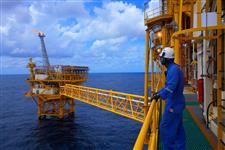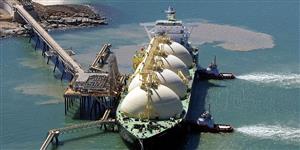
Red Sea Tanker Traffic Plummets Amid Middle East Tensions, Raising Global Trade Concerns
Posted 22/12/2023 14:44
In a significant development, the number of tankers entering the vital Bab al-Mandab Strait in the Red Sea has sharply declined, indicating potential disruptions to a critical global trade route due to heightened tensions in the Middle East.
According to recent vessel-tracking data compiled by Bloomberg, only approximately 30 tankers, including crude oil and fuel carriers, have entered the Bab al-Mandab Strait this week. This represents a staggering drop of more than 40% compared to the daily average observed over the previous three weeks.
While the Bab al-Mandab Strait may be less well-known than the Suez Canal at the northern end of the Red Sea, its significance is almost as crucial. This strategic waterway, situated between Yemen and Africa, serves as a major conduit for the transportation of massive volumes of crude oil, diesel, and other petroleum products from the Middle East and India to Europe. Additionally, Russian oil bound for India and China traverses this route in the opposite direction.
The recent decline in tanker traffic through the Red Sea has prompted concerns about its impact on global trade. Container vessels have already altered their routes, opting to sail around Africa to avoid the Bab al-Mandab Strait, underscoring the severity of the situation. Yemen's Houthi militants have declared their intention to persist in targeting ships, despite efforts by the United States to establish an international naval task force aimed at protecting shipments in the region.
While acknowledging that vessel-tracking offers a broad perspective on how trade is affected, it is essential to note that the figures provided, which primarily pertain to oil and chemical tankers, may include vessels not currently carrying cargo. Shippers may also choose to remain undetected by turning off their AIS signal equipment, a practice allowed for security reasons, as outlined in guidance from industry group Bimco and others.
Although vessel-tracking provides an initial insight into the impact on trade through the region, additional tracking data further emphasize the severity of the situation. For instance, the STI Solidarity, a vessel transporting petroleum products, initially set course toward the Suez Canal but, after idling off the coast of Oman for several days, has redirected its route toward the Cape of Good Hope.
As the Red Sea crisis unfolds, it remains a critical area to monitor, given its implications for global trade routes and the potential for further disruptions as geopolitical tensions persist.









